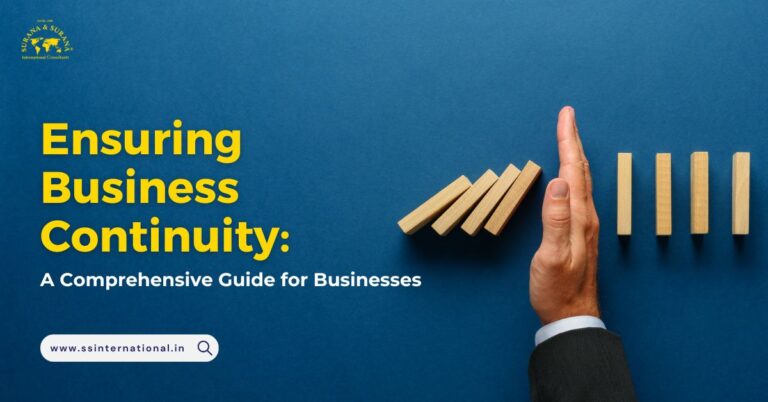Innovation is no longer an option for organizations; it is a necessity in today’s rapidly evolving business landscape. Organizations that fail to adapt and innovate risk being left behind by their competitors. In this article, we will explore the importance of innovation in organizations and how to build a culture of creativity that drives success. We will delve into the benefits of fostering a culture of creativity, the characteristics of innovative organizations, and strategies for promoting innovation within your organization. Additionally, we will discuss common challenges in fostering innovation, provide case studies of successful innovative organizations, and offer tools and techniques for facilitating innovation. Finally, we will examine the role of leadership in building a culture of creativity.
Understanding the Importance of Innovation in Organizations
Innovation is the lifeblood of organizations. It is the key to staying relevant, competitive, and successful in a rapidly changing business landscape. Organizations that embrace innovation are better equipped to respond to market demands, identify new opportunities, and solve complex problems. They are more agile, adaptable, and future-proof.
Innovation in organizations goes beyond simply coming up with new products or services. It involves a mindset shift that encourages creativity, risk-taking, and continuous improvement. It is about fostering a culture where innovation is valued, celebrated, and supported at all levels of the organization.
Benefits of Fostering a Culture of Creativity
Fostering a culture of creativity has numerous benefits for organizations. Firstly, it drives growth and profitability. Innovative organizations are more likely to identify new markets, develop breakthrough products, and create unique value propositions that set them apart from their competitors. They are able to adapt quickly to changing customer needs and preferences, ensuring long-term success.
Secondly, a culture of creativity enhances employee engagement and satisfaction. When employees are encouraged to think creatively and contribute their ideas, they feel valued and motivated. This leads to higher levels of employee retention, productivity, and collaboration. Moreover, a culture of creativity attracts top talent who are eager to work in an environment that encourages innovation and nurtures their potential.
Lastly, fostering a culture of creativity improves organizational agility and resilience. In today’s fast-paced business environment, organizations need to be able to adapt quickly to disruptions and challenges. A culture of creativity enables organizations to be proactive, responsive, and flexible in the face of change. It allows them to continuously evolve, experiment, and learn from both successes and failures.
Characteristics of Innovative Organizations
Innovative organizations share common characteristics that set them apart from their less innovative counterparts. Firstly, they have a clear vision and purpose. They know who they are, where they want to go, and how they will get there. This shared vision provides a sense of direction and focus for the entire organization, aligning efforts towards innovation.
Secondly, innovative organizations have a diverse and inclusive workforce. They recognize the value of different perspectives, backgrounds, and experiences in driving innovation. They actively promote diversity and inclusion in their recruitment, hiring, and promotion practices.
Thirdly, innovative organizations have a culture that encourages risk-taking and embraces failure as a learning opportunity. They create an environment where employees feel safe to take calculated risks, experiment, and learn from their mistakes. They celebrate failures as valuable stepping stones towards success.
Lastly, innovative organizations have effective processes and systems in place to support innovation. They have streamlined decision-making processes, cross-functional collaboration, and open communication channels. They provide resources, training, and tools to empower employees to innovate and bring their ideas to fruition.
Creating an Environment that Encourages Innovation
Creating an environment that encourages innovation requires a multi-faceted approach. Firstly, leaders must set the tone from the top. They need to communicate the importance of innovation, lead by example, and empower employees to think creatively and take risks. Leaders should create a safe space for open dialogue, idea sharing, and experimentation.
Secondly, organizations should invest in building a diverse and inclusive workforce. This includes recruiting talent from different backgrounds, fostering a culture of respect and inclusivity, and providing equal opportunities for all employees to contribute their ideas. Diverse teams bring a wide range of perspectives, insights, and experiences that fuel innovation.
Thirdly, organizations must provide the necessary resources, training, and support for innovation. This includes allocating dedicated time and budget for innovation projects, providing access to innovation tools and technologies, and offering training programs to enhance employees’ creative thinking and problem-solving skills.
Furthermore, organizations should create cross-functional teams and encourage collaboration across departments and disciplines. This promotes knowledge sharing, sparks new ideas, and enhances the likelihood of breakthrough innovations.
Strategies for Promoting Innovation within Your Organization
Promoting innovation within your organization requires a systematic and strategic approach. Here are some strategies to consider:
- Foster a culture of psychological safety: Create a safe environment where employees feel comfortable sharing their ideas, taking risks, and challenging the status quo. Encourage open and honest communication, and provide constructive feedback.
- Encourage cross-functional collaboration: Break down silos and encourage collaboration among different departments and teams. Foster an environment where diverse perspectives can converge and spark innovative ideas.
- Invest in continuous learning and development: Provide training programs, workshops, and resources to enhance employees’ creative thinking and problem-solving skills. Encourage employees to continuously learn and stay updated on the latest trends and technologies.
- Recognize and reward innovation: Celebrate and reward employees’ innovative ideas and contributions. This can be done through recognition programs, incentives, and career advancement opportunities.
- Set clear goals and objectives: Align innovation efforts with organizational goals and objectives. Set measurable targets and milestones to track progress and ensure accountability.
Overcoming Common Challenges in Fostering Innovation
Fostering innovation is not without its challenges. Here are some common challenges organizations may face and strategies to overcome them:
- Resistance to change: Innovation often disrupts established processes and ways of doing things, which can be met with resistance. Communicate the benefits of innovation, involve employees in the process, and provide support and training to help them adapt to change.
- Lack of resources: Innovation requires dedicated time, budget, and resources. Make a case for investment in innovation, demonstrate the potential return on investment, and explore alternative funding sources.
- Fear of failure: Fear of failure can stifle creativity and innovation. Create a culture that embraces failure as a learning opportunity, celebrates experimentation, and provides support for employees to take calculated risks.
- Lack of alignment: Lack of alignment between innovation efforts and organizational goals can hinder progress. Ensure that innovation initiatives are aligned with strategic objectives and communicate the connection between innovation and business outcomes.
- Overcoming silos: Silos and lack of communication can impede innovation. Foster cross-functional collaboration, create interdisciplinary teams, and provide platforms for knowledge sharing and idea exchange.
Case Studies of Successful Innovative Organizations
To illustrate the impact of fostering a culture of creativity, let’s look at two case studies of successful innovative organizations:
- Google: Google is renowned for its innovative culture and has consistently topped lists of most innovative companies. It encourages employees to spend 20% of their time on side projects and provides resources for experimentation. This has resulted in groundbreaking products such as Gmail, Google Maps, and Google Drive.
- 3M: 3M is known for its innovation prowess and has a long history of breakthrough inventions. One of its most famous innovations is the Post-it Note, which was developed by an employee during his “free time.” 3M encourages employees to pursue their passions and supports their innovative endeavors.
Tools and Techniques for Facilitating Innovation
There are numerous tools and techniques that can facilitate the innovation process within your organization. Here are a few examples:
- Design thinking: Design thinking is a problem-solving approach that emphasizes empathy, experimentation, and iteration. It involves understanding user needs, brainstorming solutions, prototyping, and testing.
- Ideation sessions: Facilitate brainstorming sessions where employees can generate and share ideas. Provide a structured framework, encourage wild ideas, and use techniques such as mind mapping and SWOT analysis.
- Innovation platforms: Implement online platforms or idea management software where employees can submit and collaborate on innovative ideas. These platforms can help streamline the innovation process, track progress, and gather feedback.
- Hackathons: Organize hackathons or innovation challenges where employees can work collaboratively on solving specific problems or developing new ideas. These time-limited events can foster creativity, collaboration, and rapid prototyping.
The Role of Leadership in Building a Culture of Creativity
Leadership plays a critical role in building a culture of creativity within organizations. Leaders must set the vision, values, and expectations for innovation. They need to demonstrate a commitment to innovation and lead by example. This includes encouraging risk-taking, empowering employees, and providing resources and support for innovation.
Leaders should also foster a culture of psychological safety, where employees feel comfortable challenging the status quo, sharing their ideas, and taking risks. They need to create an environment that celebrates and rewards innovation, and recognizes the value of diverse perspectives and experiences.
Furthermore, leaders should actively involve employees in the innovation process. This includes soliciting feedback, encouraging open dialogue, and providing opportunities for employees to contribute their ideas. Leaders should also communicate the connection between innovation and organizational goals, helping employees see the bigger picture and understand how their contributions drive success.
Conclusion
Innovation is the key to driving success in today’s rapidly changing business landscape. Organizations that build a culture of creativity are better positioned to adapt, grow, and thrive. By understanding the importance of innovation, fostering a culture of creativity, and implementing strategies to promote innovation, organizations can unlock their full potential and create a sustainable competitive advantage.
To learn more about how SSIC can help your organization foster innovation and build a culture of creativity, visit our website or contact us today.


